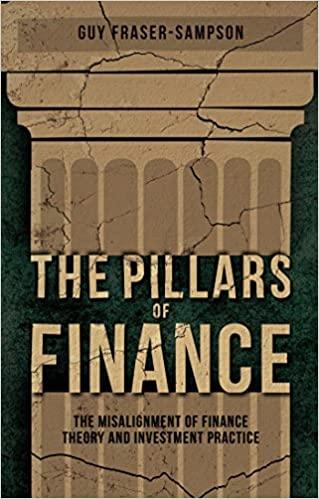Question
MGT 325 Module 5 Spreadsheet Exam - this is one long problem or case To do this exam you need to study the cases at
MGT 325 Module 5 Spreadsheet Exam - this is one long problem or case To do this exam you need to study the cases at the end of Chapter 11. Remember that the cost of debt when calculated is before tax and has to be converted to an after tax return. The returns on preferred and common stock are already after tax so are not adjusted which is in Chapter 10. PROBLEM FOR CHAPTERS TEN AND ELEVEN Saint Leo Manufacturing is going to introduce a new product line and to accomplish this it has four projects analyzed in which it wants to invest a total of $100 million. Your job is to find what it will cost to raise this amount of capital and based on the cost of capital determine which of the projects should be accepted by the firm to invest in. PROJECTS A B C D INVESTMENT $30,000,000 $20,000,000 $25,000,000 $25,000,000 EXPECTED RETURN 10.00% 14.00% 11.50% 16.00% The firms capital structure consists of: FMV CAPITAL PERCENTAGE AMOUNT DEBT 30% $15,000,000 PREFERRED STOCK 10% $5,000,000 COMMON STOCK 60% $30,000,000 $50,000,000 Other information about the firm: CORPORATE TAX RATE 30% DEBT CURRENT PRICE $1,050.00 ANNUAL INTEREST 6.00% CURRENT INTEREST PAID SEMIANNUALLY ORIGINAL MATURITY 25 YEARS, BUT NOW 20 YEARS LEFT MATURITY VALUE $1,000.00 FLOTATION COST INSIGNIFICANT MARKET YIELD PROJECTED: UP TO $20 MILLION 9% ABOVE $20 MILLION 12% 3 % additional premium PREFERRED CURRENT PRICE $45.00 LAST DIVIDEND (D0) $3.38 FIXED AT 7.5% OF PAR FLOTATION COST $1.50 NEXT DIVIDEND (D1) $3.38 COMMON CURRENT PRICE $35.00 LAST DIVIDEND (D0) $1.00 RETAINED EARNINGS $10,000,000 GROWTH RATE (g) 9% FLOTATION COST $1.50 NEXT DIVIDEND (D1) $1.090 NOTE - Once retained earnings is maxed out new common stock will need to be issued. Any preferred stock would be new preferred stock. You may want to review case in chapter 11. REQUIRED: In all of the required parts one part builds on the previous part. If you can't do a part use the set of other numbers to solve the next part. a. What is the current Kd, Kp and Ke assuming no new debt or stock? b. Since any new capital investment will require issuing new perferred stock, what would the the new returns be preferred stock (knp) and the new cost of capital? c. What amount of increase (marginal cost of capital) in capital structure will the firm run out of retained earnings and be forced to issue new common stock? d. If new common stock has to be issued what will the new return required be (Kne) and the new cost of capital? Note: All Answers Should Be Taken Out to 2 Decimal Places, Especially the Interest Rate Answers. Part a Current price $1,050.00 Maturity value $1,000.00 Interest payment Payment periods Yield rate six month rate Annual yield annual rate Kd Kp Ke Current Cost of capital Can't really use the current cost of capital since accepting any new projects will require issuing new Preferred stock requiring a rate higher than its current 7.5% yield. Part b Use your solutions in Part a to do this part, but if you couldn't complete Part a, assume Kd=4%, Kp=8%, and Ke=13%; = Knp preferred stock New cost of capital Part c If the capital structure increases more than new common stock will have to be issued to finance new projects since internally generated RE runs out, and the required return on common stock will increase as demanded by shareholders. Part d Kne common stock If you could not come up with the Kne common stock returns, do the cost of capital assuming Kd=5%, Knp=9%, and Ke=14%= New cost of capital
Step by Step Solution
There are 3 Steps involved in it
Step: 1

Get Instant Access to Expert-Tailored Solutions
See step-by-step solutions with expert insights and AI powered tools for academic success
Step: 2

Step: 3

Ace Your Homework with AI
Get the answers you need in no time with our AI-driven, step-by-step assistance
Get Started


